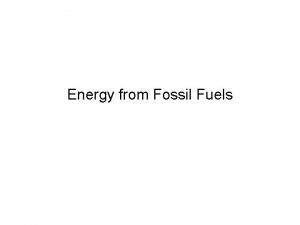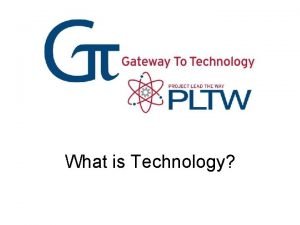NER Identifying Regulating Environmental Impacts of Nanotechnology PI

- Slides: 1

NER: Identifying & Regulating Environmental Impacts of Nanotechnology PI: N. Swami; Co-PI: M. Gorman; Students (Degree Program): A. Wardak (Ph. D. ), E. Fauss (MS), S. Deshpande (MS); University of Virginia, Charlottesville, VA 22904 Rationale Realizing market potential of nanotechnology, requires upstream identification of uncertainties: risk & opportunity What are some of the uncertainties? • No real-time monitoring & protection technology • Toxic effects at cellular or tissue levels • Classification & Nomenclature for Regulation • Multifunctional Systems that defy easy classification • System-level effects: Cascading, Interactive, Embedded Applying TSCA (Toxic Substances Control Act) to Nano-products Case Study: Carbon Nanotubes and the Low Volume Exemption (LVE) Life Cycle Stage: Manufacture Regulatory Gap: Under TSCA, LVE limits regulation of facilities producing <10, 000 kg/year Scenario: About 44 carbon nanotube producers (Cientifica), and about 100 metric tons produced per year (UK Royal Society) “A 40 inch computer display uses one-sixth of a gram of carbon nanotube powder (roughly 10, 000 nanotubes) (Mann 2004). If all 25 metric tons of carbon nanotubes going to electron emission applications (estimated above) are used for computer displays, they would enter into 150 million displays. ” Implications: Potential environmental impacts are widespread with no attention to risk. Nanomaterials change the risk assessment paradigm. Mass does not correlate risk or exposure. Project Goals Developing a framework to identify the risks and impacts: –Estimating risks from a study of potential hazards and exposure scenarios –Including Regulatory & Knowledge Gaps in risk identification strategy Methodology to weigh benefits against risks Pathways to risk-based regulation vs. list-based regulation Case Study: Risk Identification for Air Freshener Sprays Methodology: Scenario Analysis & Expert Elicitation Regulatory Statutes applying to nano-products Product Information: 20 -50 nm silver nanoparticles in polymer matrix with antibacterial properties (used as spray) High-risk scenarios: Inhalation and air release during use, water entrainment during disposal Nano-property risk triggers: Easy bio-availability, antibacterial property, media-dependent, affect on susceptible populations Intersection Scenarios: • Wider bio-availability 5 Use Inhalation during air-release or Use Skin Use Air release absorption water entrainment Disposal Inhalation Disposal water entrainment 3 Use Ingestion, • Anti-bacterial effects Disposal Air water entrainment release Disposal ingestion outside product cycle 1 Disposal Skin absorption • Susceptible Population 3 (respiratory problems) 5 1 Challenges & Opportunities Expected Outcomes: What scenarios present greatest risks (likelihood & severity) What nanoparticle properties trigger greater level of risk What are the impacts (EHS on susceptible population, ecosystem) What are the significant regulatory gaps? Risk: - Including regulatory and knowledge gaps in framework - Criteria to weigh risks arising from various sources Regulatory: - Statutes regulate products not technologies - Dispersed through multiple agencies Toxicology: - Standardized methods to collect toxicology data for application within risk context Risk versus benefit analysis Hazard communication to decrease exposure Acknowledgement: NSF SES Award # 0508347

